With the Labrador Retriever consistently one of the most popular dog breeds, choosing a lab mix can give you a very special canine companion that suits your lifestyle, home life or activity needs.
Bringing together the best of the lab traits with that of another purebred dog, a lab mix is one of the best hybrid breeds you can buy and will bring you and your family years of fun, love and enjoyment.
But with over 50 known Labrador cross breeds available, which one do you choose? We look at 25 of the best Labrador combinations so you can find your perfect canine match in our Lab Mix Guide.
The Lowdown on the Lab
Playful, friendly, energetic, faithful and loving, it’s no wonder that the Labrador Retriever has been the US’s number one dog breed for the past 30 years. This medium to large sized dog is easy to train and is also great with kids and is sociable with other pets, including cats, so easily slots into the family home.
Away from the home, the Lab is an excellent working dog, and has built up a reputation in both hunting and shooting, as well as both a therapy dog and a service canine. He also excels at dog sports, including obedience and agility. So, there’s so much to love about this gorgeous breed.
A Potted History
Originally bred as a hunting and water dog, the Lab dates back to the 1700s and comes from the Newfoundland coast. It was recognized as a breed in the early 1900s and came to the US in the 1930s where the Lab quickly became popular as a household pet. The original Labrador Retrievers were black, but yellow, chocolate and red varieties are now just as popular.
Temperament
As a pet, the Labrador is a pretty robust dog and has a life expectancy of between 12 and 14 years. His energetic nature means he needs plenty of exercise and playtime and his sharp brain needs adequate stimulation otherwise his boredom can turn into unwanted, destructive behavior.
Health
Health-wise the breed does have a few weaknesses, including arthritis, hip/elbow dysplasia and diabetes. A total food monster, the Lab can also be prone to obesity if allowed to over-eat so a breed appropriate diet is essential.
However, the over-riding positive traits of this happy-go-lucky and loving breed means the Labrador Retriever is one of the best purebred dogs to be included in a cross breed.
And as purebred Labrador puppies can be expensive, lab mix puppies may also be a little more wallet friendly when it comes to choosing which to buy.
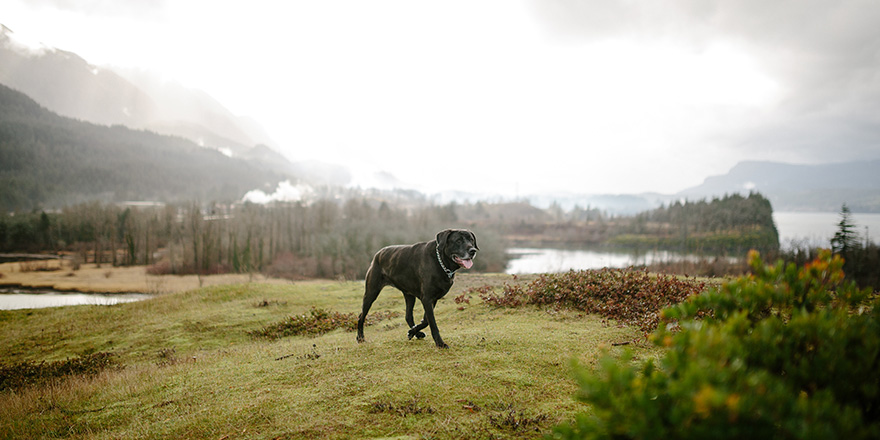
What are Mixed Breeds?
A mixed or cross breed is a dog that has been bred from two different pure breeds, or other mixed breeds. Although often called ‘designer dogs’, a cross breed dog will not have a pedigree and cannot be registered as a pure breed, although there are now mixed breed registries.
A mixed breed dog will resemble elements of both the parent breeds, although it is actually impossible to predict the exact look of the dog, or which behavior and physical traits will be the most dominant.
And this is because the mixed breed puppy will take genes from both parents. However, by choosing the right pure breeds to cross – for example, temperament, health, and size – you can get a wonderful pet that can match your own lifestyle, home set up and activity levels.
Please Note:
When selecting our top Lab mixed breeds, our choice is only intended as a guide and not as a breeding recommendation. There is little official data available regarding mixed breed dogs and so we are unable to verify the heritage or suitability of the breeds listed below.
If you are choosing a new crossbreed dog – or any pure breed – as a pet, it is important that you check the parents of the mixed breed pup, including their health and background, and avoid any irresponsible breeders.
Our Top 25 Labrador Retriever Mixed Breeds
1. Aussiedor (Australian Shepherd/Labrador)
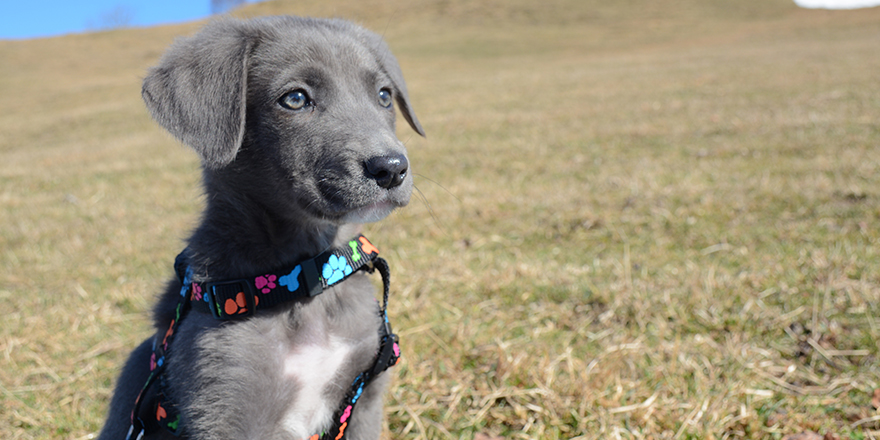
Not to be confused with the Australian Cattle Dog, the Australian Shepherd is a striking looking animal bred as working dogs which can thrive in the harsh Australian outback. So, mixing it with the Labrador Retriever means you get a hardworking, robust dog which embraces its softer Lab traits.
The Aussiedor is a large dog that’s active and intelligent, as well as highly trainable thanks to the influence of both of its parent breeds. That said, the Aussiedor is not an ideal first dog for the inexperienced as they can be a handful and need a strong pack leader.
Not quite as tall as a purebred Lab, the Aussiedor has a sturdy yet athletic frame. His coat is fairly short and prone to seasonal shedding so regular brushing is a must. Color-wise, they come in a range of hues, with potential coat colors include black, tan, cream, brown and brindle. Merle is also a possibility.
Due to his working heritage, the Aussiedor can err on the protective side as well as having the Australian Shepherd herding instinct so for this reason is best with older children. They also don’t respond well to being left on their own for too long, so as a family you need to be able to give them lots of play and exercise time as well as attention.
2. Bassador (Basset Hound/Labrador)
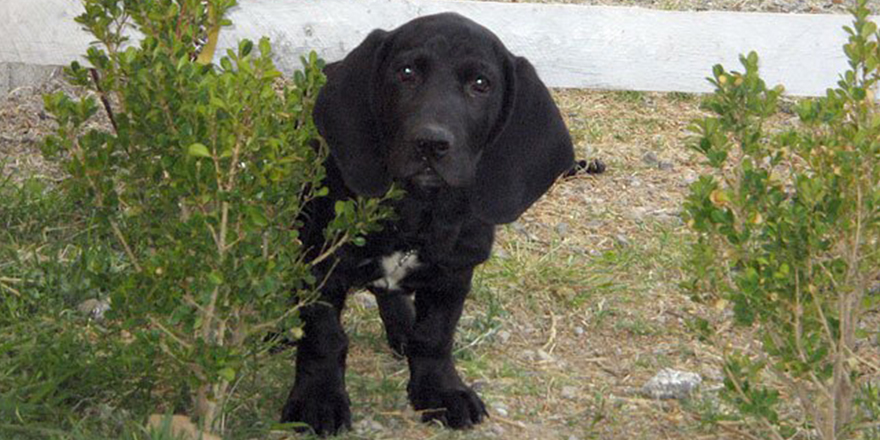
Image credit: Alex Alonso / Flickr
Combining the calm, laid back nature of the jowly Basset Hound and the energy and playfulness of the Lab, the medium-sized Bassador is a Labrador mix breed that ticks a lot of boxes.
Looks-wise, he could well have those stocky Bassett legs, but the purebred Lab body and face should be unmistakable, although he is most likely to have those floppy hound ears!
The Bassador won’t necessarily need the exercise level of a Labrador Retriever so could suit a less than active household. But he will need consistent training to manage that hound instinct otherwise you could have a chaser and wanderer on your hands.
And he will need early socialization, especially if he is to be kept in a home with other pets. But personality-wise the Bassador can be a tad stubborn, but overall, he is a little diamond, who loves nothing more than spending time with his family and will lap up all the love and attention he can get!
3. Beagador (Beagle/Labrador)
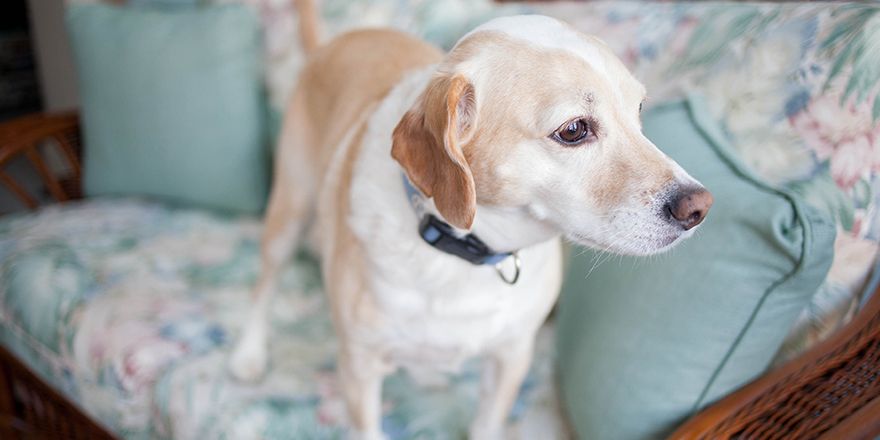
Making up two of the most consistently popular dog breeds, the Beagador is a super-cute Lab mix breed that is the ideal of companion for your kids. Mixing the bold and adventurous Beagle with the loyal Labrador Retriever means you get a dog that loves to play as much as he loves his family.
Some of the dominant Beagle traits may make this cross breed a little tricky to train but the effort it worth it, as this big-hearted mix will want to be the life and soul of your family.
Looking like a smaller, short-bodied Lab, with more than a touch of the gorgeous Beagle ears, this is a lovely looking mix breed. And, as high energy dogs, they will be able to keep up with the young kids. But they do need stimulation or attention otherwise they can get bored, and exhibit some of the Beagle’s more vocal tendencies.
Just like his parent breeds, this is a Labrador Retriever x that will be a heavy shedder, however, so perhaps not the best choice if you have allergies in the family.
4. Borador (Border Collie/Labrador)
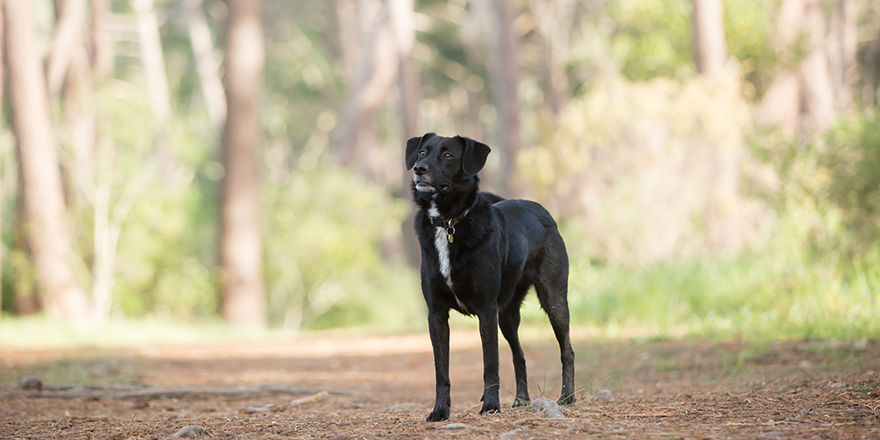
Also known as a Labollie, the Borador is a gorgeous combo of the Labrador and Border Collie and can be a good choice for first time dog owners as they are friendly, easy to train and generally obedient and eager to please. However, with the Border Collie’s working dogs gene they can be high energy and will so need plenty of space, exercise, and playtime in the dog park.
The Borador was one of the first Labrador Retriever mixed breeds and have proved to be consistently popular, especially with families. And while they will still have the Border Collie herding instinct, the Labrador genes can make this pooch an all-together more laid-back chap. But as they can be prone to herd-nip, they are best with older children.
Care-wise, they are also easy to do as they need grooming just once or twice a week and are not overly excessive shedders, despite their luxurious coat, which is often dark when a black lab mix. And thanks to his parent breeds, he is a pretty healthy cross breed and can live to around 15 years.
5. Boston Lab (Boston Terrier/Labrador)
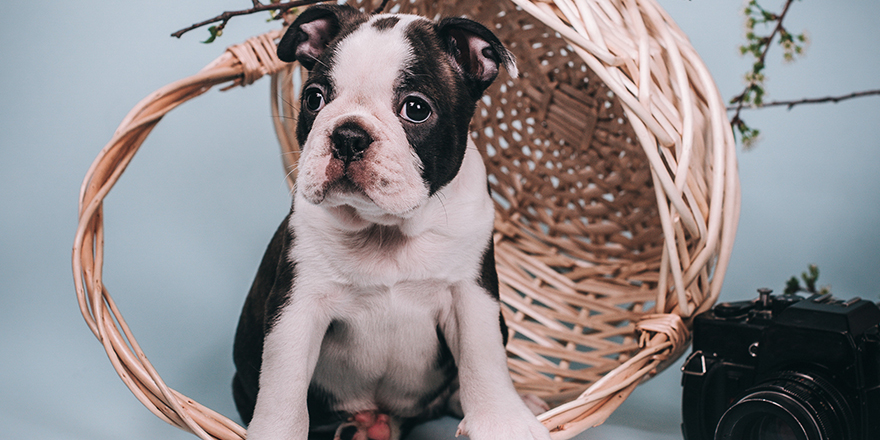
If you are looking for a smaller dog that has the qualities of a Labrador Retriever, look no further than the Boston Lab.
The result is a medium sized pooch that is both fun loving and calm, so a good choice for families with younger children. The Boston Lab loves to play, but won’t be over boisterous, preferring to lap up the attention of his little human friends. But their drive for attention means that the Boston Lab can be stubborn if they don’t get enough of your time.
For a busy family which loves to have their pet at the heart of the action, this gorgeous Labrador Retriever x Boston Terrier works well although he will need consistent training and handling. And one big tip is don’t let him off the lead, as the Boston Lab is prone to dart away if something more interesting grabs his attention.
But within his human family unit, the loyal and loving Labrador Retriever traits should come to the fore and he will make a wonderful addition to the home.
6. Boxador (Boxer/Labrador)
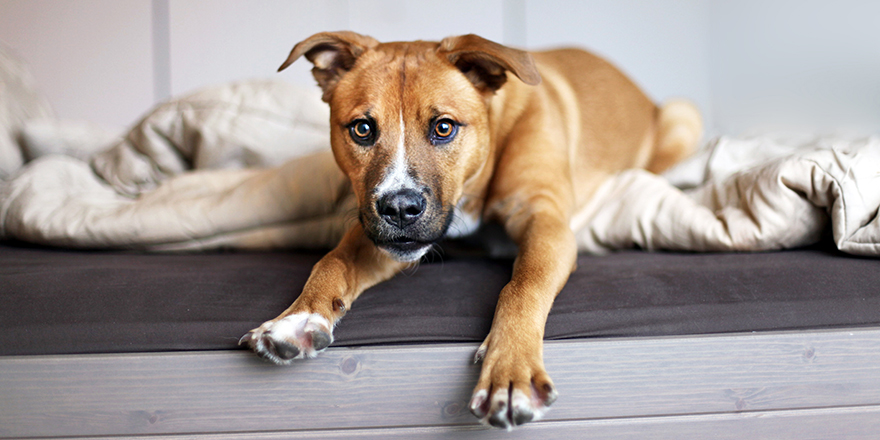
Distinguished and pretty darn handsome, the Boxador is a sturdy Lab/Boxer combination that mixes a family dog with a pooch that wants to be your guardian.
As a medium -sized pooch, he is not as tall or leggy as the Boxer and has a stockier, Labrador Retriever body. But the face is undeniably Boxer, with the squarer head and big, kind eyes. He is a shedder however, but all this dog hair can be managed with daily grooming.
Combining the strength and bravery of the Boxer and the fun-loving, friendly, and faithful nature of the Lab, this is a Labrador Retriever x that commands attention – and loves getting it.
He will need a confident handler, however, as this cross breed likes to run the show so perhaps not the best choice for novice dog owners. But with consistent training, the Boxador can make a lovely family pet as well as vocal guard dog, especially if his humans are active and love the great outdoors.
7. Bullador (American Bulldog/Labrador)
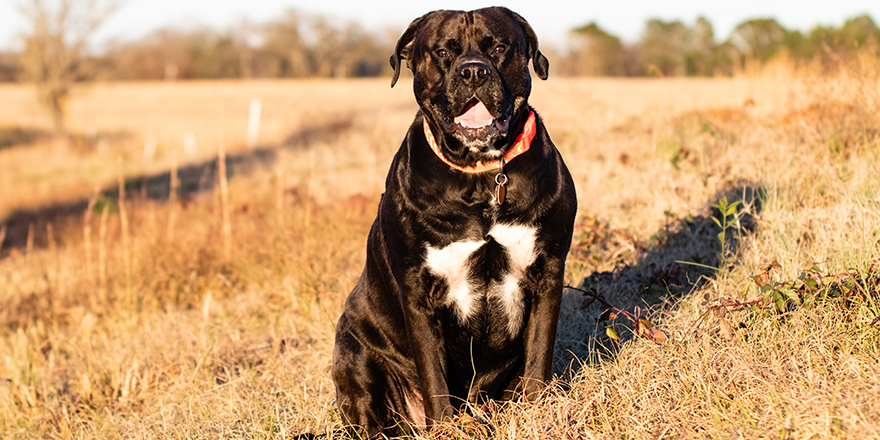
The American Bulldog is such an iconic canine that only the best will do when it comes to cross breeding. Which is why in many ways, this Bulldog/Labrador Retriever x can be the perfect combination.
The Bullador will typically maintain the Lab look, but will be stockier and more muscular, and with the jowly face of the Bully. But his eyes, ears and size are all undeniably Labrador Retriever.
Both breeds are known to be loveable as well as goofballs, and so quality cuddle and playtime with his humans is a must. And, as both the American Bulldog and the Labrador Retriever have in-built work ethics, then this is a Lab cross that can excel in many ways.
So, whether it’s out and about as a working dog, on the farm or at the family hearth, this is a versatile – and willing – Labrador Retriever x. But he will need consistent training from an early age to manage his stubborn streak. And due to his squatter snout, he can be prone to respiratory issues.
8. Cavador (Cavalier King Charles/Labrador)
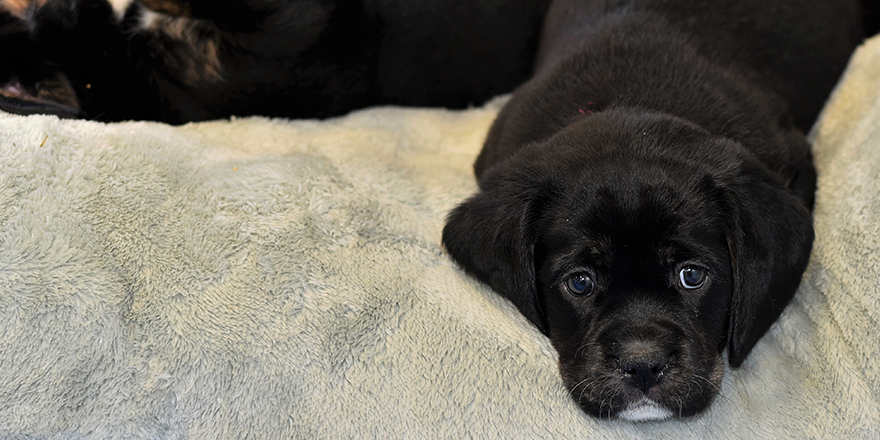
Looking for a small sized Labrador Retriever with a big personality? Then look no further than the Cavador! This gorgeous Labrador Retriever x is coupled with the adorable Cavalier King Charles Spaniel for a total cuteness overload.
Both breeds are said to have very similar personalities, with the Cavalier King Charles Spaniel also noted to be highly intelligent dogs that doesn’t need the same high level of exercise as the Lab. This means the Cavador could be the right choice for busy families as well as people who may live in an apartment or are not able to exercise their pet as much.
Looks-wise, with the Cavador you get a gorgeous coloring, depending on whether they are a black or yellow mixed lab, plus the long floppy ears the Cavalier is renowned for. Their coat is also slightly longer and curly, with all that silky fur surprisingly low maintenance.
For his smaller size, the Cavador are generally healthy dogs, more laid-back when it comes to handling and have a good life expectancy of up to 15 years.
9. Cockador (Cocker Spaniel/Labrador)
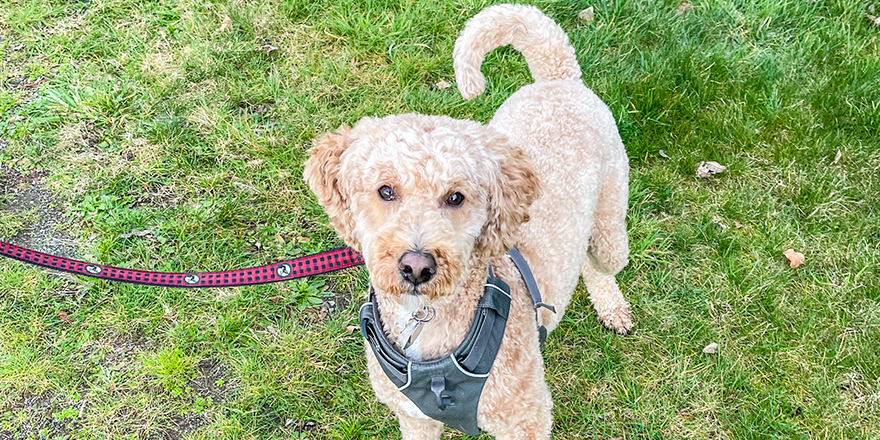
The second spaniel breed to make our top Labrador mix guide is the adorable Cockador. Also known as the Spanador, this high-energy Lab mix breed is a popular dog breed due its medium size and endearing, family-loving personality. In fact, the Cockador is a known cuddle monster as he loves to curl up in your lap, even when fully grown.
Due to its Cocker Spaniel inheritance, the Cockador can be on the excitable side and so need to be positively trained not to jump up at people as he thinks everyone is his best friend! However, it is exactly the traits he shares with his Labrador parent – loyalty, intelligence, playful and people-loving – that makes this Cocker Spaniel mix such a wonderful family pet, and is great with young children. He is a barker though, so expect a vocal pooch that likes to be your personal watchdog.
The Cockador has a decent lifespan of around 12 to 15 years and health wise is robust as most crossbreeds tend to be. However, you need to be mindful of some potential health issues, such as skin and ear issues as well as hip dysplasia, if you are looking to bring a Cockador into your home.
10. Corgidor (Corgi/Labrador)
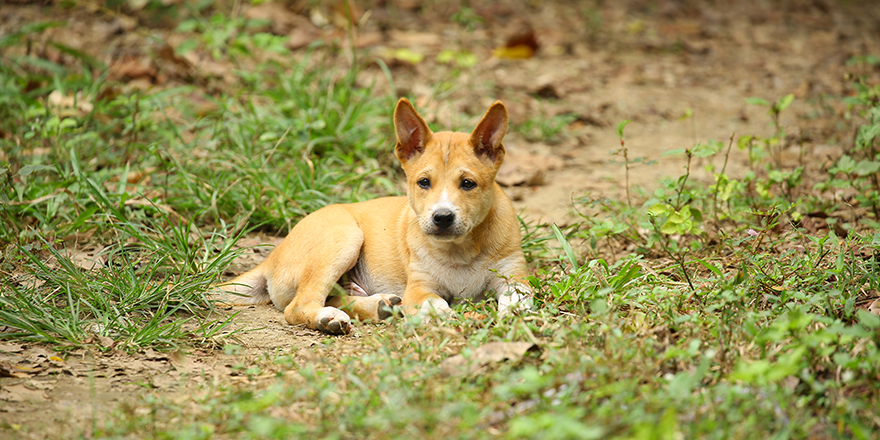
Another Labrador Retriever x pocket rocket is the Corgidor – a spunky mix with the dynamo that is the Corgi.
The Corgi has a personality to be reckoned with, which can be enhanced by the soft nature of the Lab, creating a smaller dog with a big heart and lust for life.
Physically, the Corgidor resembles the lab in its body, atop the shorter Corgi legs and with a welcoming head framed by those large Corgi ears. Highly intelligent, the Corgi is a well-balanced pooch when it comes to his temperament. Coupled with the lab energy and desire to please, you have a highly trainable dog that wants to play and spend time with his humans.
With a lifespan of around 12-14 years, the Corgidor is also generally very healthy, and his size makes the Corgidor a good choice for families.
11. Dalmador (Dalmatian/Labrador)
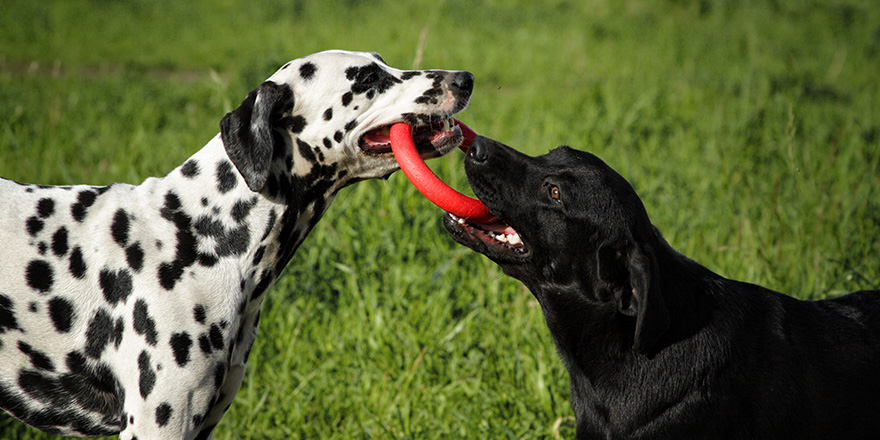
Can you get spots on a Labrador? Well, with the Dalmador, anything is possible! Mixing the long-limbed Dalmatian with the energetic and loyal Labrador Retriever, as a large dog the Dalmador is your perfect outdoor companion who can keep up the pace of an active lifestyle.
For your money you get the chunkier Lab body with the long Dalmatian legs and a slimmer, but still expressive face and super-soft ears. The short haired coat (he sheds a lot, as well as a twice-yearly full bloom) is typically black but you do get the spots which can be dotted over their white-furred chest and tummy.
Add in gentle amber or brown eyes and there’s no doubting that the athletic Dalmador is a handsome chap.
Personality wise he is kind and friendly, generally easy to train and is good with the kids as he loves to play, play, play and play again. For this reason, the Dalmador is best suited to an active home as he needs plenty of exercise every day. But for your efforts, you get a lot of rewards, as he is a happy pooch that is totally loyal to his family.
12. Doberdor (Doberman/Labrador)
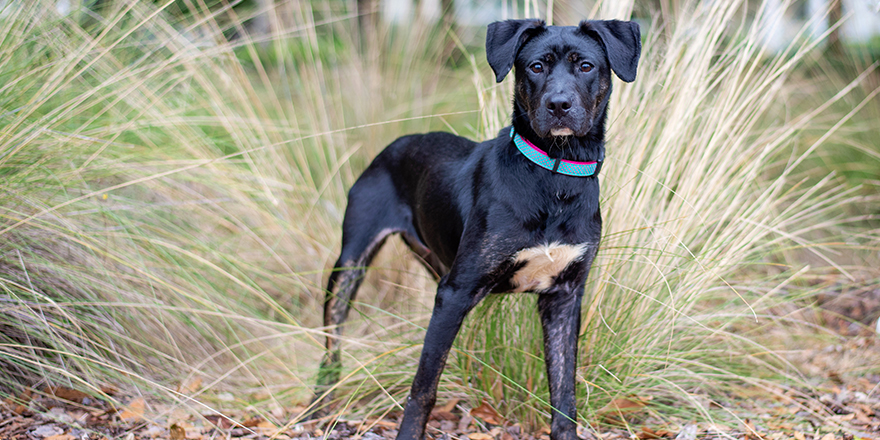
A loyal dog is a delight to own and this cross between the loving Labrador Retriever and protective Doberman Pinscher is a pooch that wants to bond with his human. The Doberdor is a strong-looking, athletic dog, usually retaining the distinctive black and tan coloring of the Doberman. But the face, ears and demeanor are clearly influenced by the Lab.
Intelligent, high energy, and alert, he also has a strong, loveable personality but can exhibit stubbornness as well as guarding instincts if not trained and socialized from a young age.
Physically not as tall as another popular crossbreed, the Labradane (Great Dane Labrador mix), the Doberdor is a still a sizable pooch and has some of the Lab’s stocky build, weighing up to 100 pounds as an adult.
They also have an instinctive love of play and exercise but could be too boisterous for younger children. And they need enough space to be the Labrador Retriever x they are meant to be, so need a big yard or garden to keep him happy.
With a lifespan of around 12 years, the Doberdor is overall a healthy pooch but they can be prone to joint issues, particularly hip and elbow dysplasia.
13. Doxador (Dachshund/Labrador)
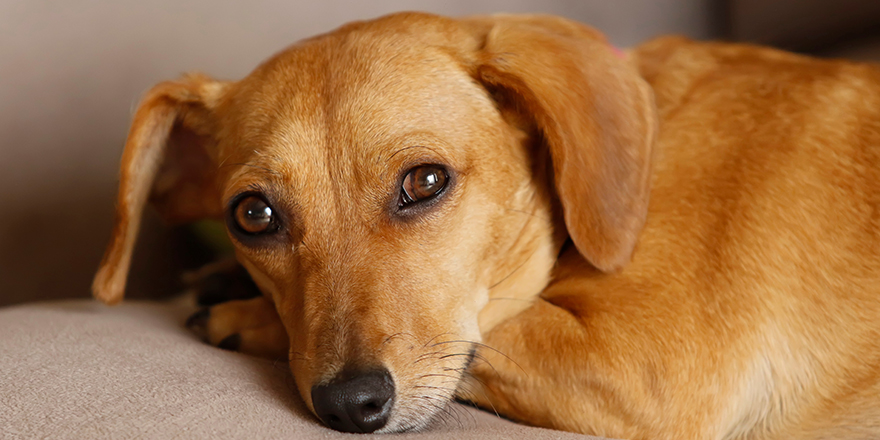
Perhaps one of the quirkiest looking Labrador Retriever x breeds you can buy, the Doxador is little in stature but super-sized in personality. Also known as the Dachsador, this mix brings together the braveheart that is the Dachshund with the ever-lovable Labrador, all in a gorgeously undersized model.
Still one of the rarer Labrador mix breeds, the Doxador is growing in popularity and it’s easy to understand why. Appearance-wise, the Doxador is distinct, carrying the long, compact body of the Weiner and the larger, open, and welcoming Labrador face. Their coat is short and are moderate shedders so easy to groom and care for.
So, what about their personality? In many ways, this is a lab mix made in heaven, as both breeds are energetic, loving, and intelligent. The Doxie is also a laid-back soul who is easy to train but can keep up with playtime with family members, just like a Lab.
When it comes to size, the Doxador is unlikely to grow any taller than 15-20 inches and weighs around 30 pounds.
Health-wise, the main negative is the increased chance of hip dysplasia, so ensuring the health of each parent breed is essential when selecting your new Doxador puppy.
14. German Sheprador (German Shepherd/Labrador)
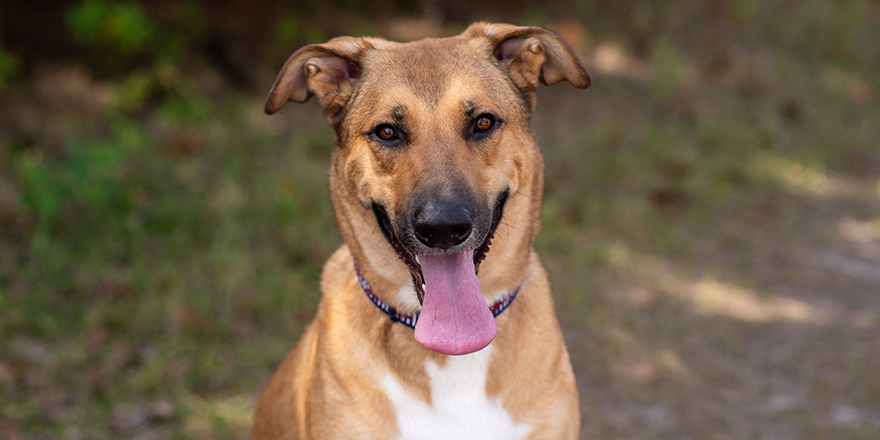
The German Sheprador is an awesome combination of Labrador and German Shepherd, resulting in a dog that is super-willing to be trained. The German Sheprador is also incredibly loyal and will make an excellent guard dog, although he can be protective so needs early socialization and consistent training to bring out his best.
One of the larger Labrador Retriever mix breeds, the German Sheprador also loves a job and thrives on regular exercise and playtime. And that loving, loyal nature means that comes sofa time, he’s happy to settle down and relax in the company of his human family members.
Care-wise, the German Sheprador can be considered low maintenance, although his thick, double-layered coat needs regular grooming. And his appearance can be a surprise, as there seems to be no overall dominance in the parent breeds. So, this means he could be solid black or gold, or display the distinctive German Shepherd saddle-back markings.
And the ears can be mixed up too, meaning you can get either the GSD’s upright ears or the floppy ears of the Lab. With a life expectancy of up to 12 years, the German Sheprador particularly suits an active home where he will make a great family pet.
15. Goldador (Golden Retriever/Labrador)
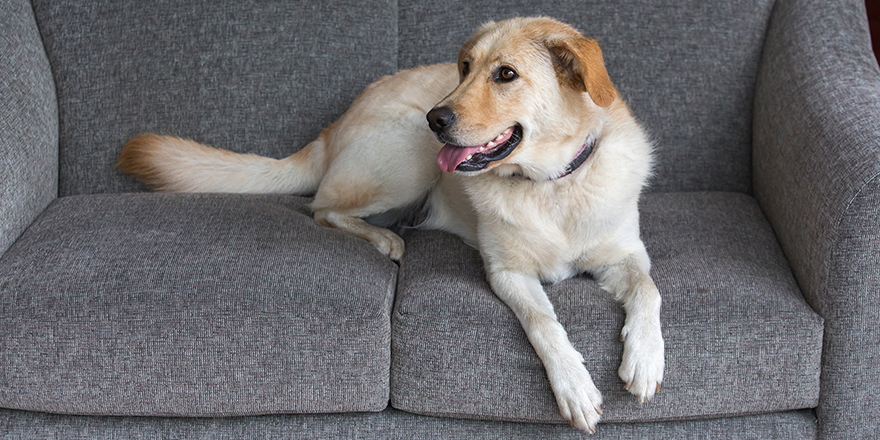
Surely the ultimate lab mix must be the Goldador, which brings together the Labrador with his breed relative, the Golden Retriever to create a super affectionate dog that has become a Labrador mix contender for the most popular dog breed.
Two of the most popular dog breeds in the world, this famous Labrador/Golden Retriever lab mix results in a long list of positives, such as their temperament, loyalty, loving nature, intelligence, kindness, and playful personality. However, the Goldador requires ample daily exercise to keep him occupied and to act as an outlet for all his energy.
Like the Golden Retriever, the Goldador is a sizable dog and can weigh up to 80 pounds so needs plenty of home space to call his own. And you will need to accept a furry home as that lush golden coat will be constantly shedding.
But for all your efforts you will get a lot in return, not least a loyal and fun-loving companion that brings out the best of the Lab and the Golden Retriever and is great with kids and other pets.
16. Huskador (Husky/Labrador)
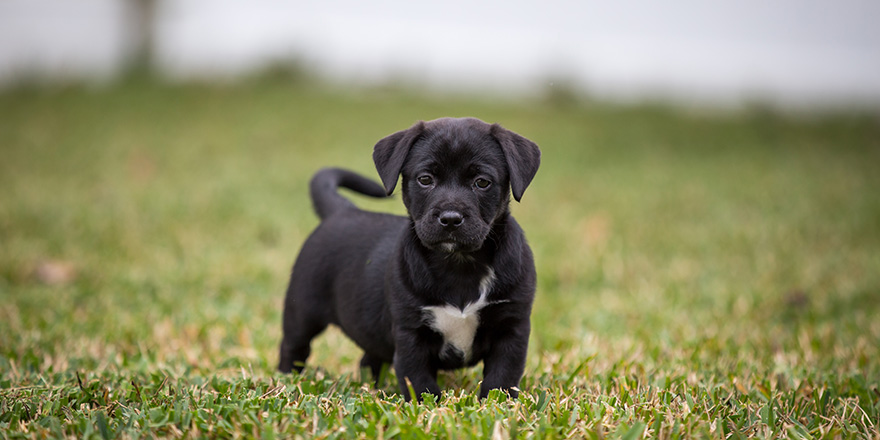
The eyes have it with the Huskador, so if you like dogs with vivid or even different colored eyes, then this could be the Labrador Retriever x for you! The Huskador – which also goes by the name of the Labsky – is a wonderful mix of Labrador and Siberian Husky. And the result is an eye-catching pooch that may also exhibit a luxuriously fluffy coat.
If you are lucky, your Huskador may have two different colored eyes, which is common in its Husky parent breed, or a matching pair of eyes in a distinctive ice blue hue. Body-wise, the Huskador is typically Labrador size but with a leaner body shape.
Color-wise, they can be golden yellow lab mix, black and white and even tan, black and white with the instantly recognizable Siberian Husky fur pattern on their face. The coat may be an issue though as it isn’t the most hypoallergenic and needs regular grooming to keep looking good.
The Huskador personality is typically friendly, energetic, and playful and, as long as he is trained early and exercised regularly, is an easy pet to have around the home, although he can be prone to separation anxiety. And you do need to be tolerant of noise, as the Husky – and so the Huskador – really likes the sound of their own voice.
17. Labernese (Bernese Mountain Dog/Labrador)
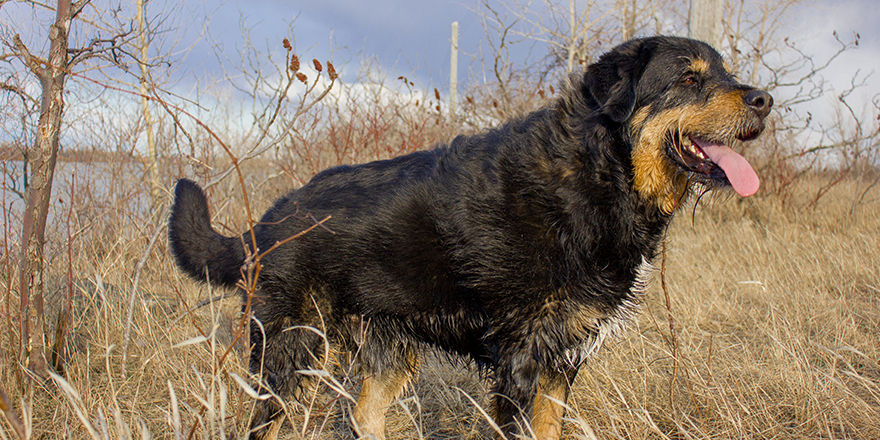
The Bernese Mountain Dog is renowned as a gentle giant, thanks to its loving and gentle personality. And so, the Labernese, while still a sizable dog, is also a lovely kind dog to have around the family home.
Mixing the people-loving Labrador Retriever with a Bernese Mountain Dog parent can up the young children/family-friendly factor, creating a big dog that is also a big softy. He is also similar in size and personality to another gorgeous giant Labrador mix, the Labernard, aka a Saint Bernard/Labrador Retriever.
The Labernese is known for its calm demeanor, although it can spill over to into aloofness until he gets to know you. And then you have a canine friend for life. So much so, that this Labrador Retriever x breed is not very good at being alone and can become anxious if separated from his humans for too long.
For a large dog breed, the Labernese is a fantastic dog as he is easy to train and loves a job to do, whether that’s playing with the kids or trying his paw at obedience training or an agility class. And while he generally has good health, due to his size this mixed breed doesn’t have the longest life spans, coming in at between eight and 10 years.
18. Labradoodle (Poodle/Labrador)
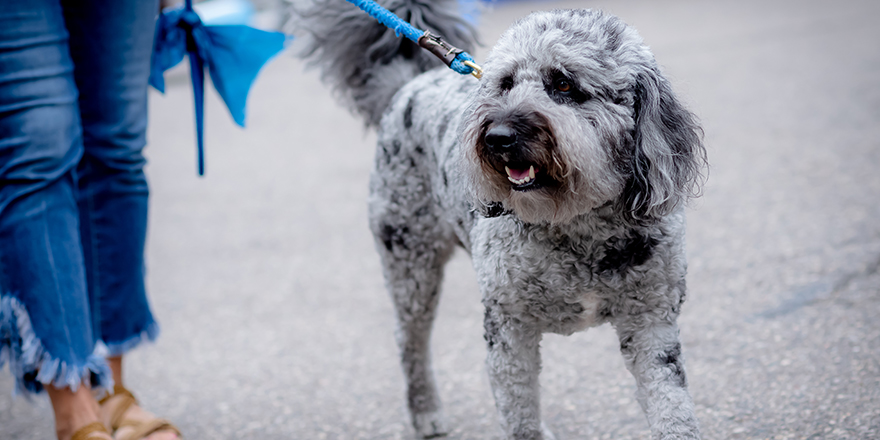
Widely considered as the most famous Labrador mix, the Labradoodle is totally cuddle cutey. And by mixing the Labrador with the low-shedding Poodle, you also get a pooch that won’t be so irritating for people who have dog fur allergies.
The Labradoodle is one of the most popular mixed breeds you can buy and as well as their low-shed fur, their smaller to medium size and friendly personality means they fit well in most homes. And their desire to play makes the Labradoodle a much sought-after pet for young children.
With a shaggy fur covering on the face and muzzle, the Labradoodle’s body fur is soft and curly, and comes in a single coat is a range of colors, including gold, caramel, black, red, chocolate and even blue.
However, this pup is no couch potato as he has the high energy level of a typical Labrador Retriever and so needs regular daily exercise to keep him happy and out of mischief. And another big plus for this famous lab mix is its longevity, with a potential lifespan of between 16 and 18 years.
19. Labrahuahua (Chihuahua/Labrador)
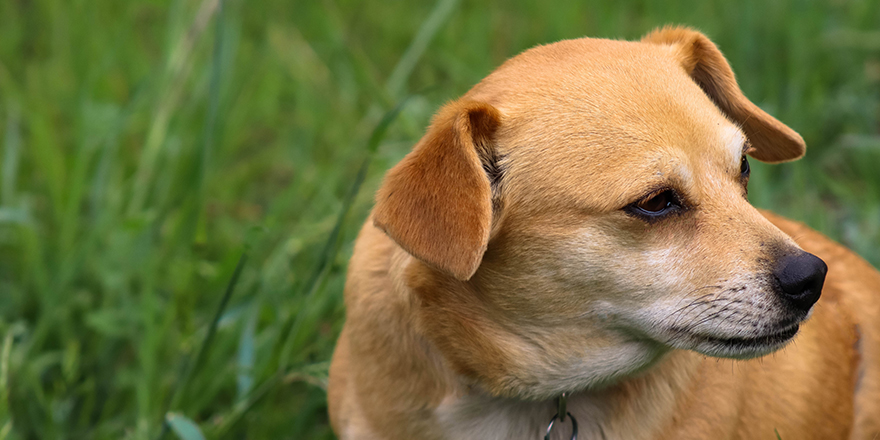
Now to the smallest of the Labrador mix breeds and one which can seem like an odd match – the Labrahuahua.
The little and large of the crossbreed world, the Labrahuahua takes the Labrador Retriever and mixes it with the diminutive Chihuahua. And in some strange way, it works. As an odd couple – other than loving people, both breeds have very different personalities – you get the happy, playful lab bundled together with the feisty, bold, and full-on chihuahua. And all in a mini-lab sized package.
Due to the size of the chihuahua, the majority of Labrahuahuas are created by artificial insemination, and the result is typically a pooch of around 10 inches tall and weighing in at no more than 25 pounds.
Looks wise, the Labrahuahua can also be unpredictable, and you can get either a lab face or the more snub-nosed/big eyed visage of the Chihuahua.
And with consistent training, coupled with plenty of love and attention and you should have a long-lived companion that is a small lab mix packaged for big fun.
20. Malador (Alaskan Malamute/Labrador)
Combining the hardy Alaskan Malamute with the energetic Labrador, the Malador is a stunning looking animal that has stamina to spare.
One of the world’s oldest breeds, the wolf-like Alaskan Malamute can thrive in harsh conditions and was bred as a sled dog as well as watch dog and protector for his humans. This means that the Malador is highly loyal and eager to please, quickly forming a deep bond with his human family.
The Labrador traits enhance this Alaskan Malamute cross’s softer side, making a wonderfully active mix breed that loves to be outdoors as well as spending time with his people. However, this heightened affection can lead to over-attachment and the Malador may struggle with separation anxiety when left on his own.
Lean and muscular, with a large head that combines both the Labrador and Alaskan Malamute features, the Malador is expressive and handsome. His short, dense coat is super-thick as well as being a super shedder so regular grooming is a must.
The Malador makes a loyal family pet who loves to play, although care should be taken around smaller children due to his size and strength. They also have a tendency to be dominant so experienced handling is advised. And as long as they are socialized at an early age, the Malador can get along well with other family pets.
21. Pitador (Pitbull/Labrador)
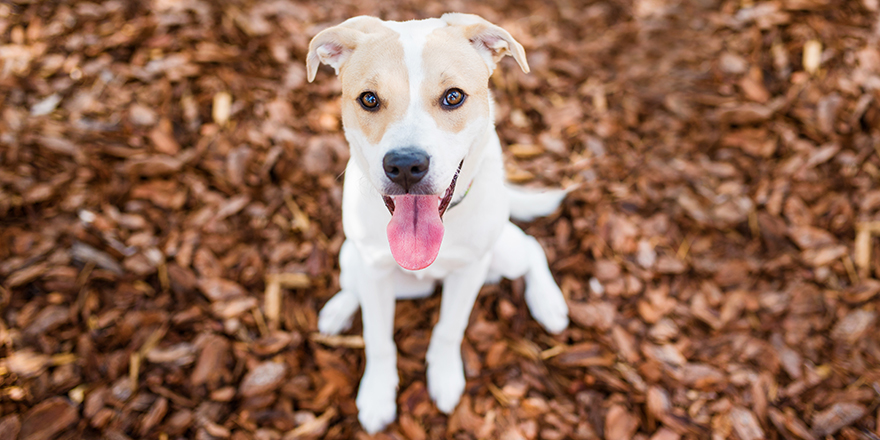
Another popular Labrador mix, the Pitador packs a lot of personality into a muscular, large-sized body.
Taking the people-orientated American Pitbull Terrier and crossing it with a Labrador parent, you get a strong-looking animal that just wants to be part of the family. Both the Bull Terrier breed and Labrador Retrievers tend to be people pleasers and they are also energetic, so the Pitador is best with experienced dog owners who have plenty of time and energy on their hands. But his short fur is low maintenance, so he is an easy doer when it comes to your grooming routine.
Just like his Labrador parent, the Pitador doesn’t like to be left on his own for too long and can become destructive through boredom and anxiety.
However, plenty of play, toys as well as quality time with his human and the Pitador should make a rewarding pet. But you do need to bear in mind his size and large frame, as the Pitador can be anywhere up to 90 pounds.
22. Pugador (Pug/Labrador)
Who doesn’t love the face of a Pug? Well, now you can get all that ‘pugness’ in a Labrador package with the gorgeously odd Pugador. Another smaller breed Labrador mix, the Pugador is growing in popularity as the easy-going personalities of both its parent breeds shine through.
He is cheeky, tenacious, energetic and if allowed, more than mischievous, but hey, it is so easy to forgive that face! Size-wise, the Pugador is small to medium, with a Labrador shaped body, pert Pug tail and flop over ears. The eyes are a lovely Lab/Pug hybrid while there’s a good chance your Pugador pup will grow into a very Pug-like face.
Unlike the Labrahuahua, the Pugador is more inquisitive than feisty and can make a wonderful pet for children as he loves to be part of a happy, active family. And as he’s not prone to barking so that’s a win, although he is a regular shedder when it comes to his short fur.
With good socialization, the Pugador is also good with other pets and can live up to 15 years.
23. Rottador (Rottweiler/Labrador)
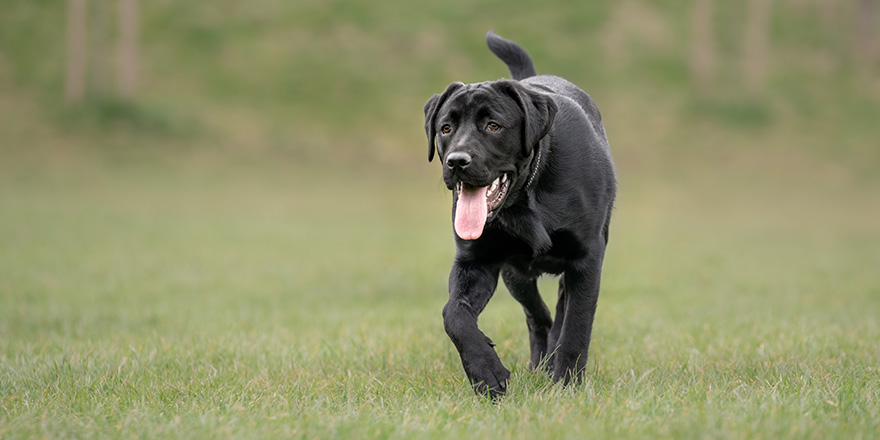
The Rottador is a highly sought-after Lab mix as it combines size and stature with striking looks and a lovely, affectionate nature. But if you are considering a Rottador, you do need the experience to manage and train what can be a dominant mixed breed.
Inevitably falling on the large side, the Rottador – or Labrottie, as they are also known – has a stocky, muscular body and the typical large Rottie head. Many can also have the stunning black and tan markings of the Rottweiler breed, enhanced by the longer snout and ears of the Labrador Retriever.
Loyal to their owners, the Rottador will bond deeply with his human, which can lead to anxiety if they are separated from you for too long. And they can also become destructive if allowed to get lonely or bored.
However, happy and settled, the Rottador will be quick to show his soft and goofy side, loving nothing more than to play and as they are so intelligent and obedient, they are also surprisingly easy to train.
A low shedder, grooming the Rottador is easy and as a cross breed they are robust, although they can be prone to arthritis and joint problems as they age.
24. Springador (Springer Spaniel/Labrador)
Springer by name, and springy by nature, this Springer Spaniel/Labrador Retriever mix is a bundle of energy, intelligence, and fun. And this means the wonderfully named Springador works best with an active family who love to get outdoors.
With both breeds originally hunting dogs, you will need to expect this desire to chase to come through in the crossbreed, but it can be managed through good training, socialization, and plenty of activities to keep their attention and brains entertained. However, be mindful of your Springador around other smaller pets as they can chase, and they may not be best suited for families with very small children.
Daily exercise is a must for the Springador, as well as plenty of enclosed, safe outdoor space at home. But with the right amount of exercise, this loving, fun pooch will be happy to switch off and hang out with you on the sofa when you are both ready for some downtime.
The Springador is also a good-looking Lab mix, with a soft silky coat that is longer than the average Labrador. However, they can be heavy shedding, so you do need to be prepared to groom and clean up if you are looking to welcome the gorgeous Springador into your home.
25. Weimador (Weimaraner/Labrador)
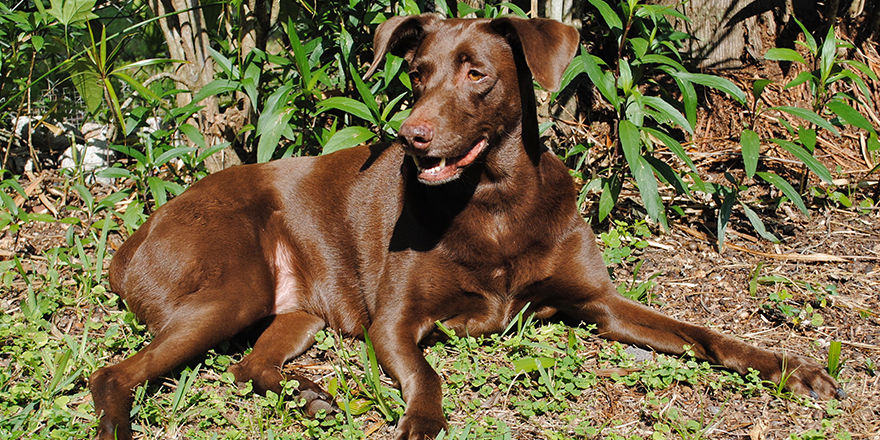
Our final top Labrador cross is another leggy hound, that is also known as the ‘Silver Lab’ due to the gorgeous metallic-like coat you may be lucky to get.
Bringing together the majestic Weimaraner with the friendly and reliable Labrador can be a magical mix. And from both looks and personality, the resulting Weimador doesn’t disappoint. A tall animal, the Weimador stands above the average Lab and presents with a sleek, muscular body topped by a velvet soft short fur that sheds lightly and so is easy to care for.
The Weimador’s personality is not as open as the Labrador Retriever, and so can come across as aloof but they do bond well with their family, who will love to see their affectionate and super-soft side.
But one personality trait the Lab and Weimador do share is a tendency to get anxious if left alone for too long. He is a livewire however when it comes to play and exercise and so will bring endless fun and entertainment, especially if you and the family love to spend quality time outdoors.
Source:
- Crossbreeding Biology Online
- What is a crossbreed dog? The Kennel Club
- The Secrets of the Labrador ColorsThe Labrador Site
FAQs:
The answer to this question is entirely personal as you will be looking for a breed mix that best suits your family, lifestyle, and activity needs. For example, if you like to be outdoors, or are wanting a working or hunting dog, then opting for a Labrador Retriever X that includes a gun or working dog breed would be a good choice to make.
Alternatively, if you are looking for a family pet that is sized to fit with your household, then a cross with a smaller breed such as Corgi or Boston Terrier could give you the ideal companion pet. And if it is a guard/protective dog you need, then a Labrador crossbreed with a larger, dog breed such as the German Shepherd or Rottweiler is certainly worth considering
So, the key to the best Lab Mix breeds is down to individual suitability as well as temperament, all-round health, and ease of training.
Due to its friendly, affectionate personality and active outlook on life, the Labrador Retriever will partner well with most other breeds. It is thought there are currently well over 50 Labrador Retriever mix breeds, but the best are the ones that are bred with compatible or complementary breeds when it comes to temperament, trainability and health.
The Labrador Retriever is such a popular breed as they make great family pets which suit children as well as other household pets. So many Lab mixes are also good family dogs. But it is important to also consider the breed the Labrador Retriever has been bred with, as the resulting Lab Mix can also inherit its temperament traits.
This means some research on both breeds as well as being careful in choosing the right breeder is the best advice to give when looking for a Labrador mix to be your new family pet.
While there are three main Lab coat colors – chocolate, black or yellow – there are other shades and hues such as red or blue which can also be added into the mix. And as genetics play a key role in coat color, it is also possible for a Labrador to have a litter of puppies which have different colors.
So, even with Labs, variety is the spice of life!









